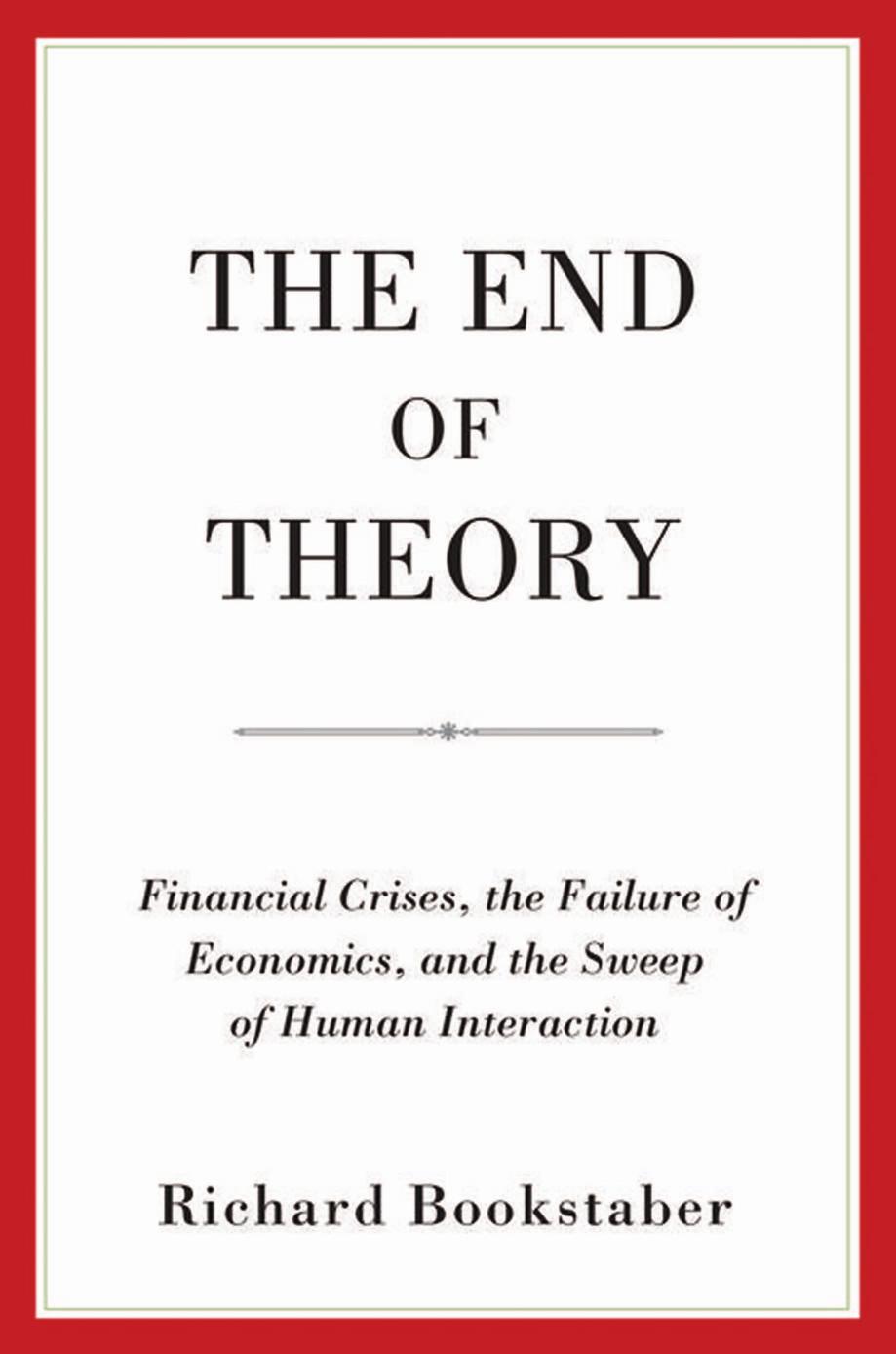The End of Theory: Financial Crises, the Failure of Economics, and the Sweep of Human Interaction by Richard Bookstaber

Author:Richard Bookstaber [Bookstaber, Richard]
Language: eng
Format: epub, pdf
ISBN: 9780691169019
Publisher: Princeton University Press
Published: 2017-01-15T07:00:00+00:00
BOARDS DON’T HIT BACK
Complexity in the information battlefield, the willful creation of complexity—complexity that is peculiarly human in origin—and the resulting endogenous uncertainty all spell trouble for the foolhardy armed only with the standard model that dominates today. Yet they keep trying to apply it, even to the point of approaching economics as if it were a branch of physics.
Would that it were that simple. In the Bruce Lee movie Enter the Dragon, Lee faces his archenemy in a fight. To intimidate him, his opponent holds up a board and splits it in two with his fist. Lee watches passively and says, “Boards don’t hit back.” That gets to the reason physics does not work in finance, and not for lack of trying: markets do hit back.
Wall Street employs loads of physicists for their otherworldly math skills, but the markets are not physical systems guided by timeless and universal laws. Markets are systems based on gaining an informational advantage, on gaming, on action and strategic reaction, and thus a space that can never be expressed with a fully specified model or with well-delineated possibilities. There is feedback to undo whatever is put in place, to neutralize whatever information comes in.
The natural reply of the physicist to this observation is, “Not to worry. I will build a physics-based model that includes feedback. I do that all the time.” The problem is that the feedback in the markets is designed specifically not to fit into a model, to be obscure, stealthy, to come from a direction where no one is looking. That is, the radical uncertainty is endogenous. You can’t build in a feedback or reactive model, because you don’t know what to model. And if you do know—by the time you know—the odds are the market has shifted. That’s what makes a trader successful—he can see things in ways most others do not, anticipate in ways others cannot, and then change his behavior when he starts to see others catching on.
I have seen this issue repeatedly in risk management, and it is one reason any risk management model will not cover all risks. Once the model is specified, the traders will try to find a way around it. Are you measuring interest rate risk? Well, fine, then I will do a trade that is interest rate neutral but bets on the slope of the yield curve. Now you’re measuring yield curve risk? Fine, then I will do a trade that is both interest rate and yield curve neutral, but rests on the curvature of the yield curve—a butterfly trade. And as this game is being played, the complexity and thus endogenous risk is increasing with each iteration. One of the problems with the standard risk measures is that they become exposed to multiple dimensions for such gaming, and for gaming in a way that is harder to detect. In fact, it was largely reliance on these measures (such as value at risk) that allowed for the ballooning of risks in the banks pre-2008.
Download
The End of Theory: Financial Crises, the Failure of Economics, and the Sweep of Human Interaction by Richard Bookstaber.pdf
This site does not store any files on its server. We only index and link to content provided by other sites. Please contact the content providers to delete copyright contents if any and email us, we'll remove relevant links or contents immediately.
International Integration of the Brazilian Economy by Elias C. Grivoyannis(90701)
The Radium Girls by Kate Moore(11921)
Turbulence by E. J. Noyes(7935)
Nudge - Improving Decisions about Health, Wealth, and Happiness by Thaler Sunstein(7615)
The Black Swan by Nassim Nicholas Taleb(7010)
Rich Dad Poor Dad by Robert T. Kiyosaki(6399)
Pioneering Portfolio Management by David F. Swensen(6226)
Man-made Catastrophes and Risk Information Concealment by Dmitry Chernov & Didier Sornette(5921)
Zero to One by Peter Thiel(5684)
Secrecy World by Jake Bernstein(4641)
Millionaire: The Philanderer, Gambler, and Duelist Who Invented Modern Finance by Janet Gleeson(4374)
The Age of Surveillance Capitalism by Shoshana Zuboff(4209)
Skin in the Game by Nassim Nicholas Taleb(4161)
Bullshit Jobs by David Graeber(4094)
The Money Culture by Michael Lewis(4074)
Skin in the Game: Hidden Asymmetries in Daily Life by Nassim Nicholas Taleb(3929)
The Dhandho Investor by Mohnish Pabrai(3698)
The Wisdom of Finance by Mihir Desai(3650)
Blockchain Basics by Daniel Drescher(3495)
